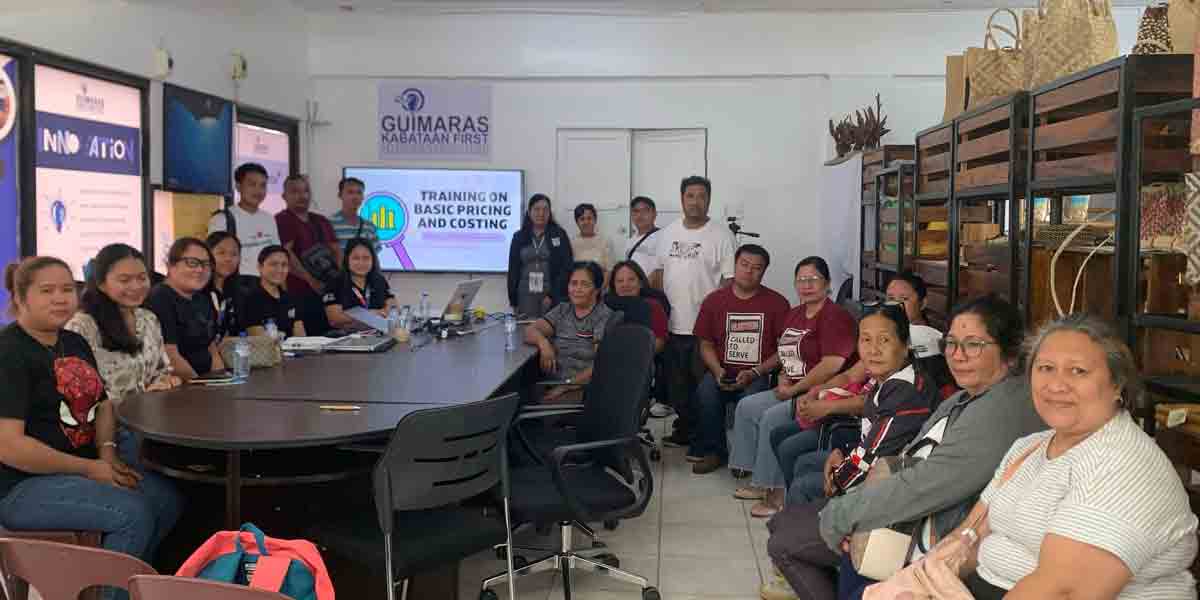By Alex P. Vidal
“The key is not to prioritize what’s on your schedule, but to schedule your priorities.” —Stephen Covey
ANTIQUE seems to be closer to the heart of President Ferdinand “Bongbong” Marcos Jr. than Iloilo.
As a matter of fact, the upgrade of Antique airport, named after the late assassinated former governor Evelio “Beloy” Javier, a critic of the President’s late father, former President Marcos Sr., will reportedly commence this month with no less than President Marcos Jr. himself giving the green light during his recent visit in Antique.
The repair of the more sophisticated and more important Iloilo International Airport, on the other hand, will start in November, or four months after the upgrade in the Antique airport was scheduled to start.
Not only that.
The scraggy Antique airport, not operational for awhile due to lack of passengers from Manila to the capital municipality San Jose de Buenavista, pales in comparison to the Iloilo International Airport yet, its upgrade is reportedly estimated to cost some P500 million.
The budget for Iloilo International Airport’s repair?
P190 million, according to the Civil Aviation Authority of the Philippines (CAAP), which has established an accelerated timeframe for utilizing the allocated fund.
-o0o-
According to CAAP’s timeframe, the initiative plans to add two new escalators while replacing two existing ones, upgrade Flight Information Display Systems, a private automatic branch exchange system, fire detection and alarm systems, gang chairs, and one elevator to improve the passenger terminal building, and install three chillers for a total of P190 million.
The total amount in Iloilo airport is some P310 million shy of the total budget of P500 million appropriated for Antique airport.
If our mathematics is right, the disparity in the budget reflects the level of favoritism and, to some extent, politics that continue to bedevil the priorities of this administration in the infrastructure and tourism projects.
But wait a minute. Didn’t Mr. Marcos Jr. lose both in Antique and Iloilo to former Vice President Leni Robredo in the 2022 presidential election?
Robredo drubbed Marcos Jr. in Antique 142,663 or 44.73 percent to 115,027 or 36.07 percent.
Marcos Jr.’s campaigner in Antique, Senator Loren Legarda, who topped the Antique senatorial contest with 231,832, failed to give Mr. Marcos Jr. a victory despite her influence and popularity as former Antique representative.
In Iloilo, the bailiwick of former senator Franklin “Frank” Drilon, Robredo steamrolled Marcos Jr. by 728,781 votes or 54.81 percent to 459,261 or 34.54 percent.
-o0o-
FIVE years ago, during the oath-taking of newly elected local officials attended by then Supreme Court Associate Justice Francis Jardeleza and billionaire industrialist Enrique Razon, Iloilo Governor Arthur “Toto” Defensor Jr. vowed to serve the province of Iloilo based on “social justice” in a speech.
We expect the governor to give the Ilonggos an appraisal on how far he has gone in the implementation of “social justice” in Iloilo Province. Let’a hope his political marriage with President Marcos Jr. won’t ebb into “social injustice” for the Ilonggos.
Social justice is originally a Catholic term, first used about 1840 for a new kind of virtue (or habit) necessary for post-agrarian societies.
The term has been bent by secular “progressive” thinkers to mean uniform state distribution of society’s advantages and disadvantages. It is really the capacity to organize with others to accomplish ends that benefit the whole community.
According to the United Nations, “Social justice may be broadly understood as the fair and compassionate distribution of the fruits of economic growth.”
Social justice refers to a concept in which equity or justice is achieved in every aspect of society rather than in only some aspects or for some people.
A world organized around social justice principles affords individuals and groups fair treatment as well as an impartial share or distribution of the advantages and disadvantages within a society.
Formal definitions for social justice vary in wording, but there are commonalities among them. 1. Equal rights 2. Equal opportunity and 3. Equal treatment
-o0o-
(Ginsulat ni Ambassador Leo Tito L. Ausan, Jr. sa hapon sang ika-27 sang Hunyo 2024 sa Dhaka, Bangladesh.)
KAHIDLAW SA GINAMOS
Sa tuman nga kahidlaw ko sa ginamos,
Sa pagpauli sa amon balay sa Iloilo, masami ako nagahangos,
Sa tuman nga pag dali kag puros-puros, pagsampot ko sa balay, sa pagginhawa ko, ako na ang ginakulabos,
Ano pa ang dughan ko daw sa kinumos,
Ang akon pamatyag, ako daw sa malumos,
Sa amon nga pag-kaon, ang isa ka pudyot nga ginamos,
Sa isa ka bandehado nga kan-on, akon ma-id-id nga ginakumos,
Agud paagi sa madasig nga pag hamal kag dapal.
Ini magatap-ok, maga-talbo, kag madasig ko nga maubos.
Kag matambalan sang dayon kag lubos ang kahidlaw ko sa ginamos,
Kag magapamusi-musi ako dayon, sa pamusod sang amon balay nayon sa ubos,
Samtang sa akon napulo ka mga tudlo sa duha ko ka kamot, isa-isa nga nagatamos….
Ang akon kahidlaw sa ginamos,
Madasig lang mahim-os,
Kon makapauli ako sa Iloilo,
Kag sa kan-on sang ginamos makakumos,
Kag madasig nga madapal ang mga kan-on nga kinumos,
Kag sa akon mga tudlo ako makaisa-isa sang tamos,
Ang akon nga mga nasambit bastante na nga makapaumpaw,
Sa akon tawhanon nga kamanol kag sa ginamos kahidlaw,
ANO KARON ANG MALAIN, KAG GINAHINAGAY NINYO YUHOM-YUHOM KAG KADLAW?,
SALA KO BALA KON SA KAHIDLAW KO SA GINAMOS, AKO MAY MAHAPOS NGA PAAGI AGUD INI MATAPOS?..
ANG KAHIDLAW SA TANAN NGA BAGAY, NAGA DEPENDE LAMANG SA ATON, KON LUYAG TA GID MAN INI NGA TAMBALAN KAG BUL-NGON, May paagi nga mabudlay kag may yara man nga mahapos, ang Kahidlaw sa Ginamos, matambalan sa madasig nga paghamal, sang kan-on, nga sa ginamos kinumos, kag sa aton mga tudlo isa-isa kita nga makatamos!!
(The author, who is now based in New York City, used to be the editor of two daily newspapers in Iloilo.—Ed)





















